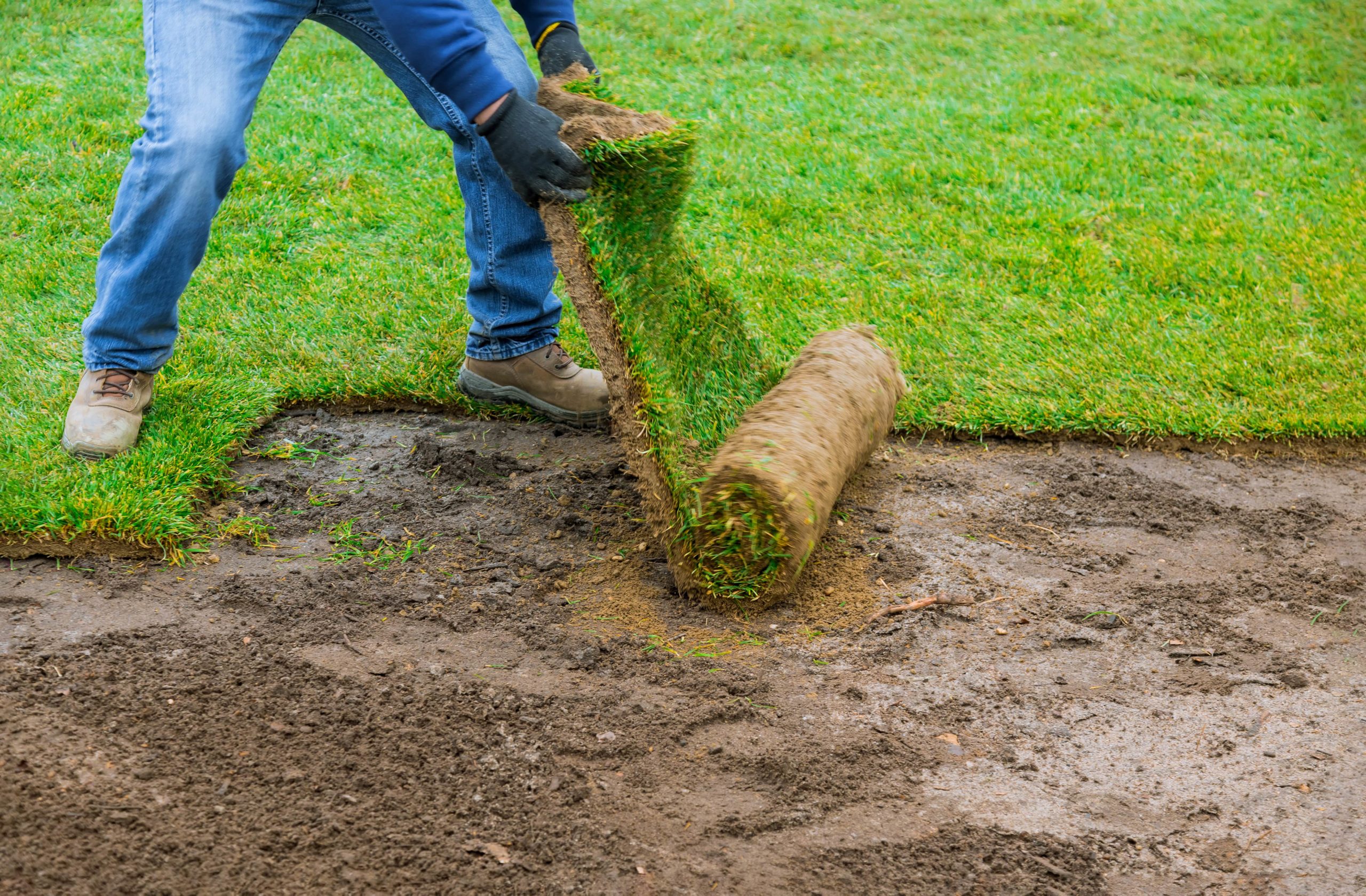Watering new sod is the most important thing for your new lawn. When sod is freshly laid, it requires regular watering so that the new lawn can develop strong roots. The establishment of your new sod lawn is relatively easy, but it does require the right amount of water to get started. A shallow root system should develop within the first two weeks, and up to 6 weeks for a deeper root system.
With that in mind, below are some easy-to-follow new sod care tips from Mountview landscaping. When it comes to caring for and watering new sod, it is crucial to follow the tips. Having a new sod watering schedule also plays an important role.
Implement Some Preventative Maintenance For Your New Lawn
Care for your new lawn starts before the sod is even installed, and continues for several weeks after installation is complete. It’s important to take some preventative measures so that the new sod can grow successfully.
- New sod care begins before installation: The soil on which you are going to install the sod must be well watered prior to installation. When the initial soil is dry, it removes moisture from the sod, making it harder for the sod to take root.
- Do not walk/play/use your new lawn: Limit traffic as much as possible on your new lawn for the first 2-3 weeks as this allows for better root establishment.
- Watch out for heat reflection: Heat reflecting off buildings and sidewalks will dry out your new lawn. Make sure you spend extra time on areas next to them when watering new sod.
Develop A Watering Schedule For New Sod
New sod has short roots, so it can only absorb so much water at a time, therefore how often you should water your new sod is important. Approximately 15 minutes after your sod is laid down, you’ll want to water it thoroughly. Do not flood your new sod with water. All you want to do is keep it moist.
In the first and second week, watering new sod should be done every other day for approximately 15-20 minutes. It’s best to do it in the early morning and late afternoon.
The third week is when you can leave two days between watering new sod sessions. This gives the soil time to dry out a bit. When it does, you’ll be able to walk on it.
Mowing Your New Sod
Allow the roots to grow and become strong in the ground before you start mowing your new lawn. Do not mow your new sod until it is a bit longer than the length you’d generally allow your grass to grow, about 3.4 to 4 inches – probably about 6-7 days after installation.
When it is eventually time for mowing, only remove 1/3 of the leaf to maintain plant health.
It’s also a smart idea to leave grass clippings on your lawn, as they’re a good source of natural nitrogen. However, remove and rake away any clumps scattered across your grass (which is possible given how much watering new sod you’ve done).
You can also alternate mowing direction in which you cut your lawn. One week back-and-forth and one week side-to-side. This will help create very even growth across your sod.
When Can You Fertilize New Sod?
New sod does not require fertilizing as it was most likely fertilized before it was harvested. It is best to let the new lawn set roots and establish slowly instead of fertilizing and forcing new growth.
One month after installation is a good time to fertilize. Apply a balanced fertilizer, 7-7-7, to encourage some growth. Then feed your lawn 3 to 4 times within the growing season to ensure the turf remains healthy.
Choose chemicals and fertilizers to ensure healthy grass growth and to help mitigate the risks of diseases by keeping insects at bay. Lime and sulfur, along with the right liquid fertilizers, can be added to the soil depending on the soil test and the type of sod you are choosing. You can determine the pH levels of the soil through a store-bought pH test.
How To Mitigate Weeds For Your New Sod
It is very important to stay on top of weed control in the turf. Whether mechanically or chemically, weeds should be removed. At this point, your lawn is completely weed-free and if you stay on top of it now you can avoid a larger problem in the future.
Why Aerating Helps Lawns
Once your lawn has taken some time to establish itself, aerating your lawn should happen once a season. Grass roots need the essentials for proper growth and health – including water, air, and nutrients – to grow thick, deep, and strong. When the soil is compacted, even by just a ¼ or ½ an inch, it can inhibit the flow of these essentials and greatly affect the health and beauty of your lawn.
Aeration of your lawn creates holes down into the soil to alleviate compaction so that air, water, and nutrients can reach the grass roots. Even if you do this just once a season, it can help support thicker, healthier turf growth for years to come.
Contact us for all your new lawn needs! From installation to maintenance to providing watering new sod tips, we’ll make sure your grass is green, healthy, strong, and beautiful, year-after-year. Contact us with your questions or comments. Or, if you already know what you need, request a FREE quote – call 519-458-8179.
